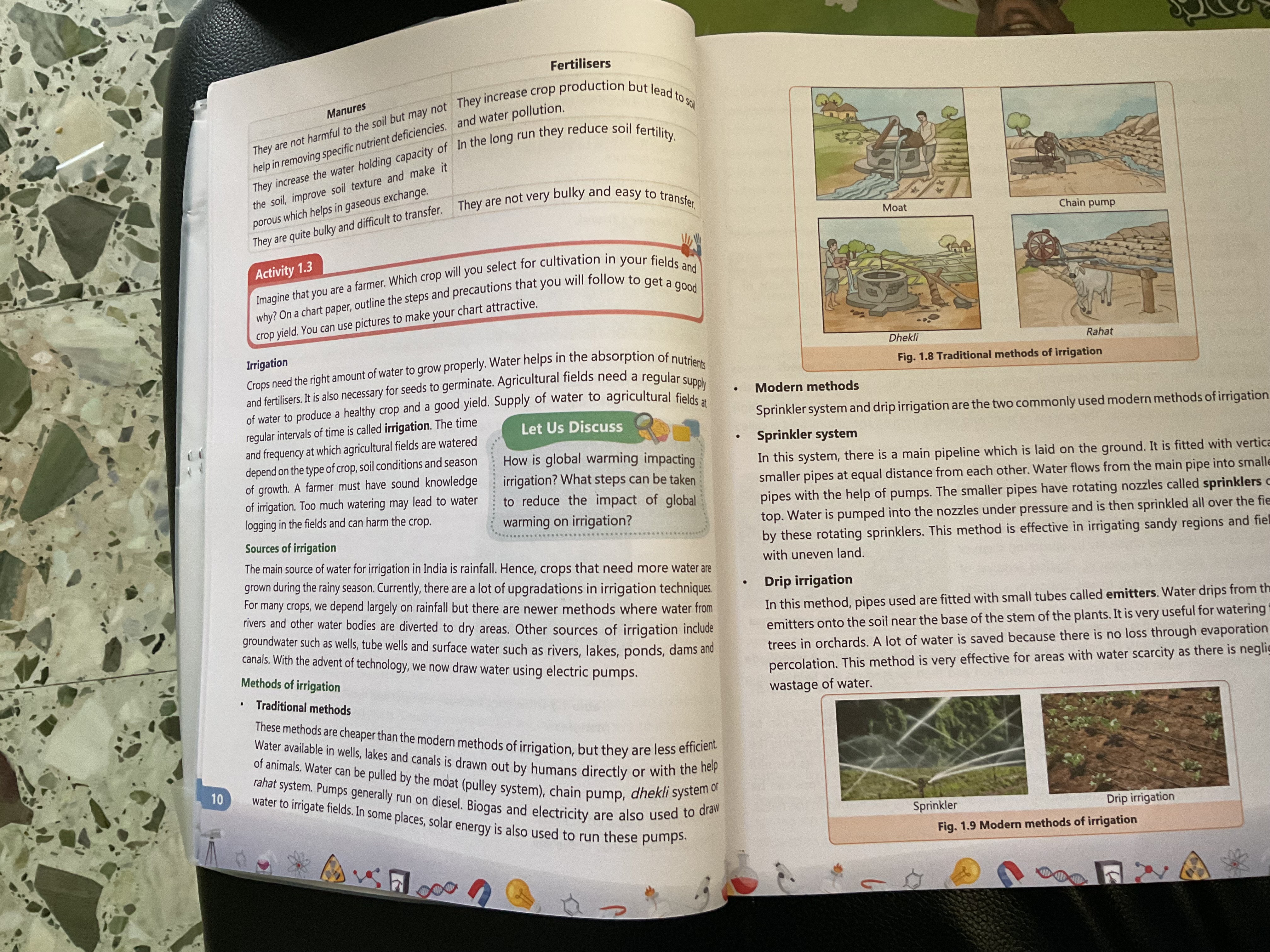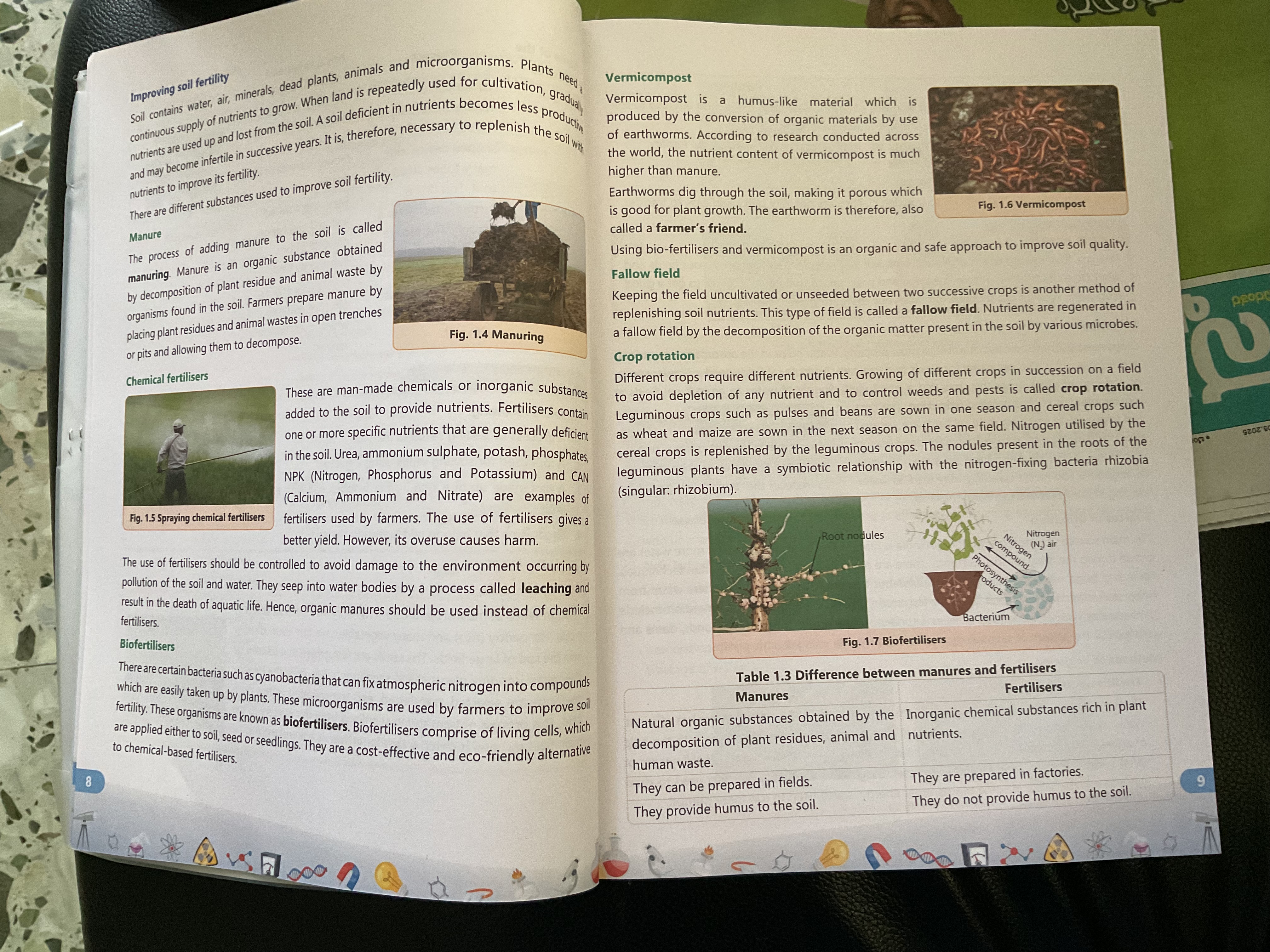Crop Production and Management Flashcards
1/35
Earn XP
Description and Tags
Flashcards covering key vocabulary and concepts from the Crop Production and Management lecture notes.
Name | Mastery | Learn | Test | Matching | Spaced |
|---|
No study sessions yet.
36 Terms
Agriculture
The practice of growing plants and rearing animals for food and other products.
Ploughing/Tilling
The process of loosening and turning the soil to make it suitable for planting crops.
Hoe
A tool used for loosening soil, breaking lumps, removing weeds, and increasing moisture absorption.
Cultivator
A tractor-driven tool used for ploughing the soil, saving time and labor, and removing weeds.
Sowing
The process of adding seeds into the soil for growing crops.
Crumbs
Big pieces of soil formed during ploughing which need to be broken before sowing seeds.
Crop
Plants of the same kind cultivated at one place on a large scale.
Food Crops
Crops grown to produce food for direct consumption by humans (e.g., cereals, vegetables, fruits).
Cash Crops
Crops cultivated mainly for commercial purposes (e.g., jute, cotton, tea).
Kharif Crops
Crops grown from June to September, requiring a lot of water (monsoon crops).
Rabi Crops
Crops grown from October to March, needing cold weather and less water (winter crops).
Zaid Crops
Crops grown from April to July, requiring warm and dry weather (summer crops).
Manure
An organic substance obtained by the decomposition of plant residue and animal waste, used to improve soil fertility.
Fertilisers
Man-made chemicals or inorganic substances added to the soil to provide nutrients.
Biofertilisers
Microorganisms, such as cyanobacteria, used to improve soil fertility by fixing atmospheric nitrogen.
Vermicompost
A humus-like material produced by the conversion of organic materials using earthworms.
Fallow Field
A field kept uncultivated between two successive crops to replenish soil nutrients naturally.
Crop Rotation
Growing different crops in succession on a field to avoid depletion of any one nutrient and to control weeds and pests.
Rhizobia
Nitrogen-fixing bacteria that have a symbiotic relationship with leguminous plants.
Broadcasting
A method of sowing seeds in which the seeds are randomly scattered on the field by hand.
Seed Drill
A tool attached to a tractor that places seeds uniformly at the right depth and proper distance in furrows.
Transplantation
The process of transferring seedlings from the nursery to the main field by hand.


Weeding
The process of removing weeds from the crop field, either manually or by using weedicides.
Weedicides
Chemicals used to control and kill weeds in the field.
Harvesting
The process of cutting and gathering mature crops from the field.
Threshing
Separating grains from the chaff after harvesting.
Winnowing
Cleaning grains by removing lighter impurities with the help of wind.
Gunny Bags
Protective sacs for storing grains, made of jute or plastic.
Granaries/Silos
Large-scale storage of grains in metal or brick-built structures to protect them from pests and moisture.
Chemical Treatment
Adding chemicals to kill harmful fungi microbes and pests to protect crops
Agriculture Science
Science of growing plants and rearing animals for food, clothing, and other products.
Pomology
The branch of agriculture concerned with the study, cultivation, and management of fruit crops.
Olericulture
The branch of agriculture that deals with the cultivation of vegetables.
Floriculture
The branch of agriculture concerned with the cultivation of flowers and ornamental plants.
Animal Husbandry
The practice of rearing animals for food and other human uses.